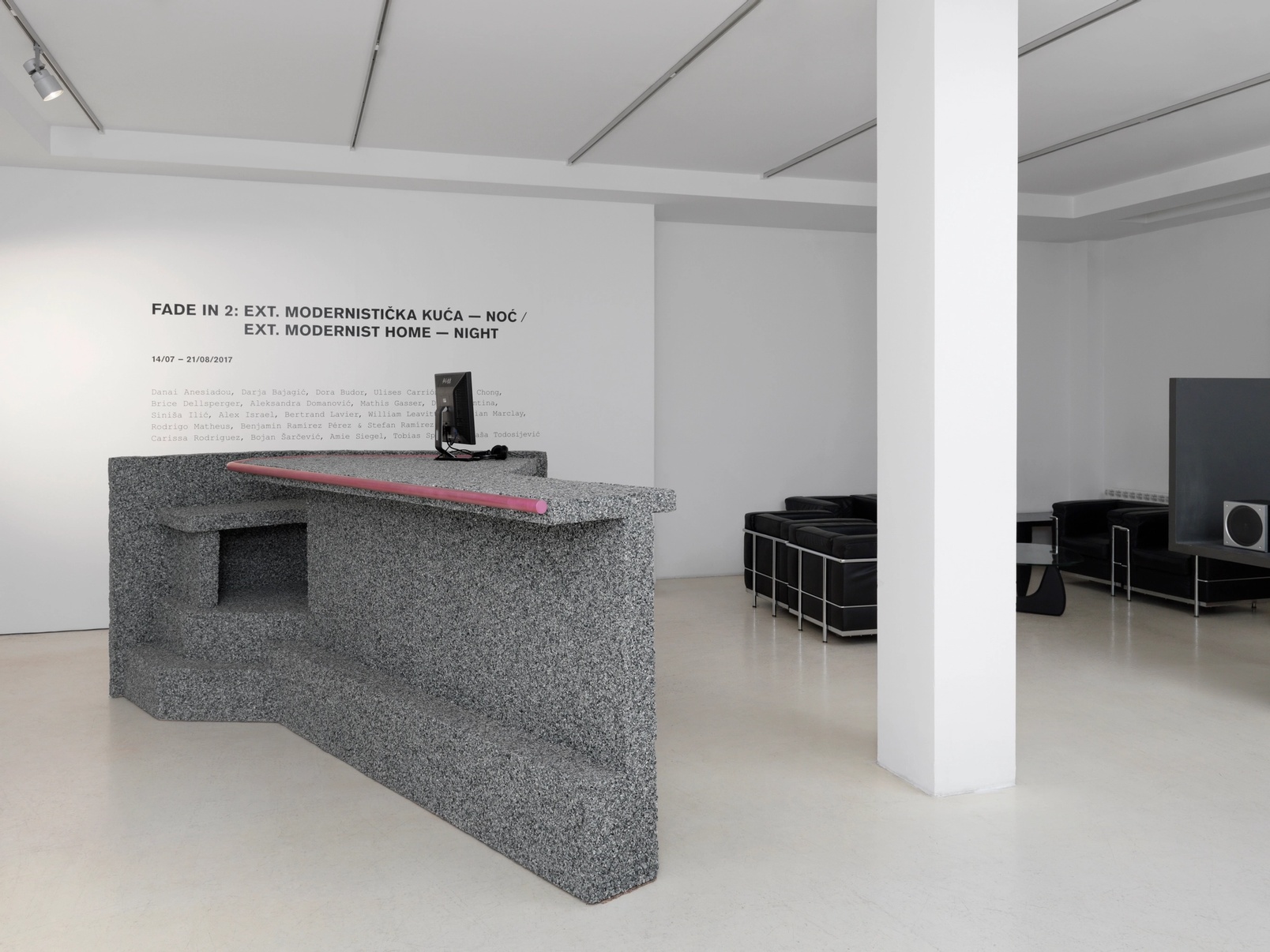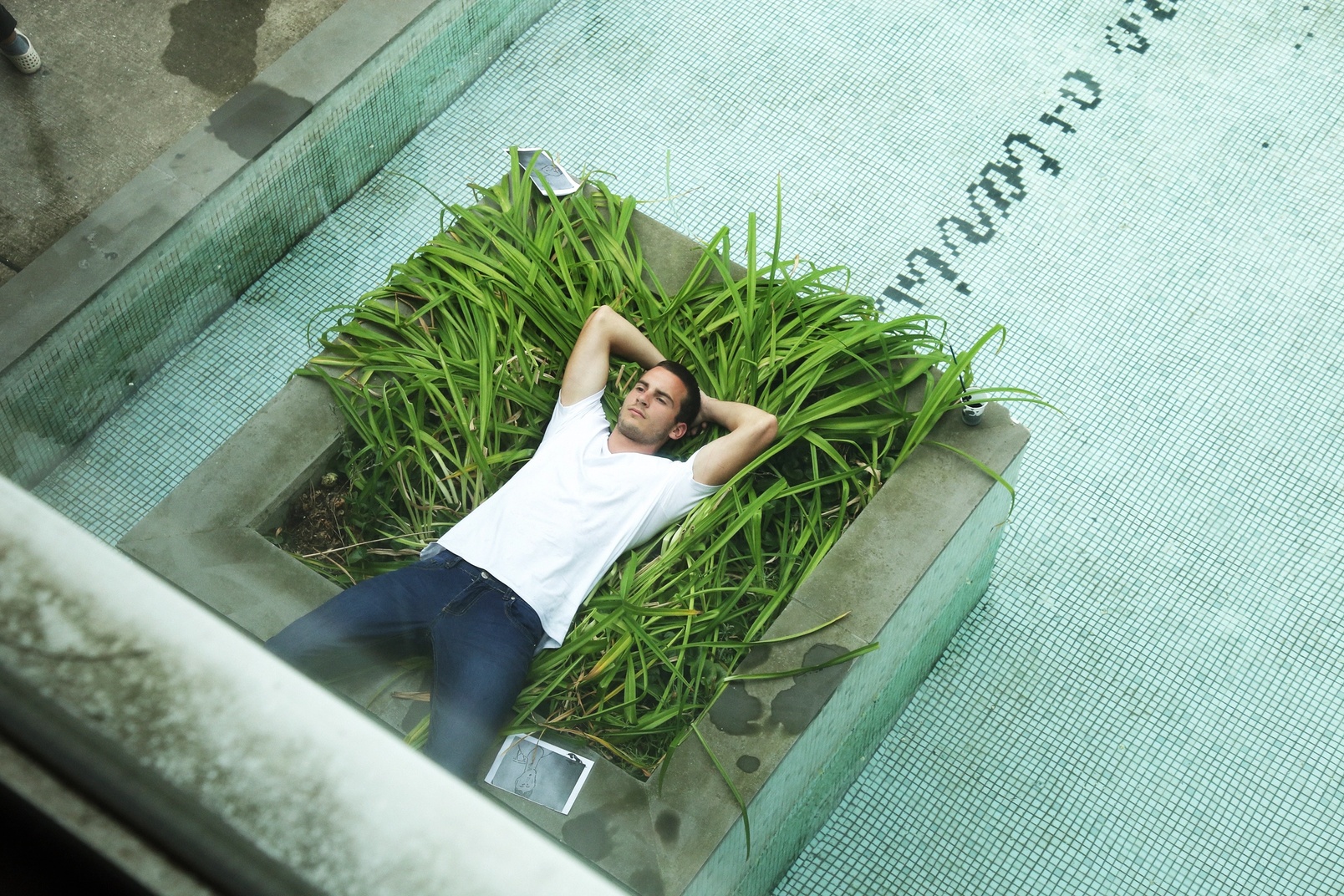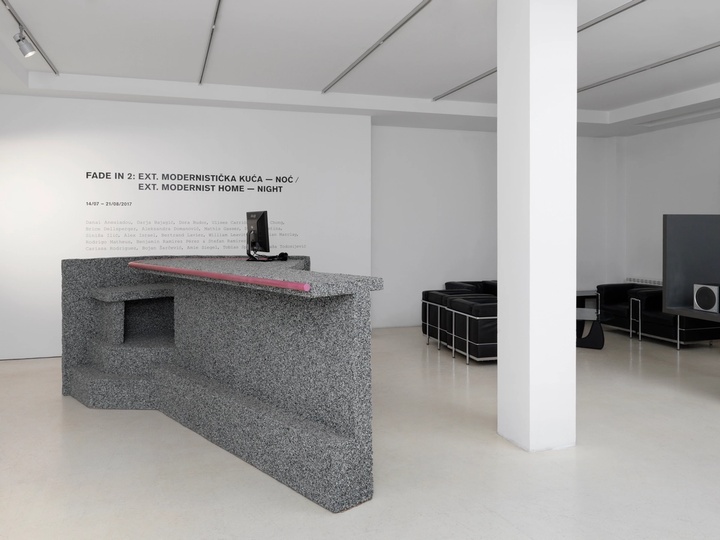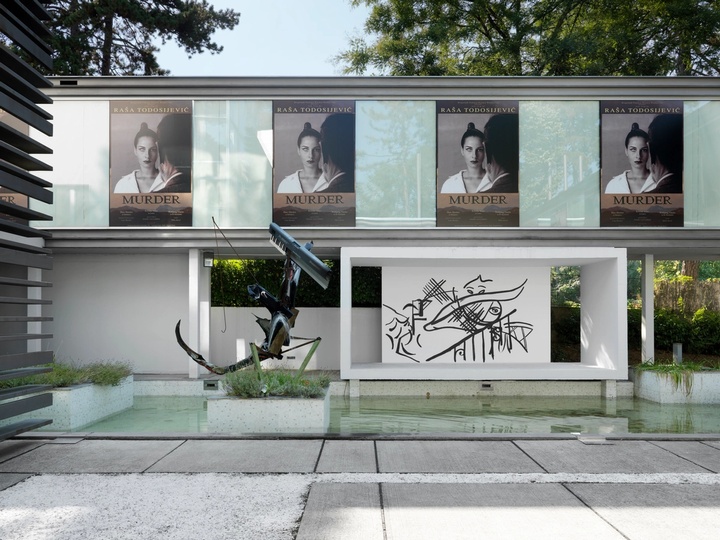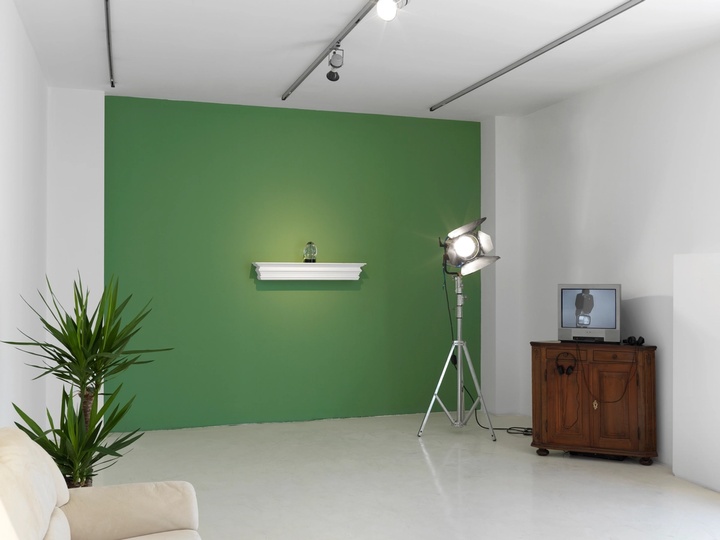FADE IN 2: EXT. MODERNIST HOME – NIGHTVarious Artists
Gallery-Legacy of Milica Zorić & Rodoljub Čolaković
Belgrade
.–
With Danai Anesiadou, Darja Bajagić, Dora Budor, Ulises Carrión, Heman Chong, Brice Dellsperger, Aleksandra Domanović, Mathis Gasser, Daiga Grantina, Siniša Ilić, Alex Israel, Bertrand Lavier, William Leavitt, Christian Marclay, Rodrigo Matheus, Benjamin Ramírez Pérez, Carissa Rodriguez, Bojan Šarčević, Amie Siegel, Tobias Spichtig, and Raša Todosijević.
Curated by the Swiss Institute in collaboration with Julie Boukobza, and produced by Balkan...Projects.
Inhabiting the rooms of the Museum of Contemporary Art, Belgrade’s Milica Zorić and Rodoljub Čolaković Gallery-Legacy, FADE IN 2: EXT. MODERNIST HOME – NIGHT investigates the role that art plays in narrative film and television. The exhibition acts as a sequel to FADE IN: INT. ART GALLERY – DAY, which was on view at Swiss Institute in March 2016. This new iteration allows participating artists to further reclaim the manner in which art is represented on screen, whether as props, set dressings, plot devices, or character cues.
The nature of the exhibition is such that sculptures, paintings, performances, and installations transition from prop to image to art object, staging an inquiry into whether these fictional depictions in mass media ultimately have greater influence in defining a collective understanding of art than art itself does. Certain preoccupations with artworks are established early on in cinematic history: the preciousness of art objects anchors their roles as plot drivers, and anxieties intensify regarding the vitality of artworks and their perceived abilities to wield power over viewers or to capture spirits. Across genres, the character of the artist is habitually portrayed as a volatile, mercurial figure with license to subvert societal norms, who is thereby ridiculed, feared and revered. From many such narratives, FADE IN 2 draws out the art objects, granting them the status only previously achieved on-screen, whilst pointing to moments in which one form of media wrangles with the power of another.
FADE IN 2 reimagines the original exhibition in the Gallery-Legacy Čolaković, the converted former residence of Milica Zorić and Rodoljub Čolaković, now one of a venues of the Museum of Contemporary Art, Belgrade. The space’s storied history as a residence, hotbed of organized crime and art museum further reinforces the exhibition’s ambition to recast the gallery in a new role as a set for dramatic scenes. Newly commissioned works in the exhibition by Darja Bajagić, Aleksandra Domanović, and Siniša Ilić delve into the canon of Serbian and ex-Yugoslavian cinema, enabling a coalescence of filmic, social and political histories.
In addition to new commissions made for FADE IN by Dora Budor, Brice Dellsperger, Mathis Gasser, Bertrand Lavier, Christian Marclay, Carissa Rodriguez and Amie Siegel, FADE IN 2 features additional new works from Danai Anesiadou, Daiga Grantina, Rodrigo Matheus, Benjamín Ramírez Pérez, and Tobias Spichtig. Source material ranges widely from Rondo (1966) and La Collectionneuse (1967) through Xanadu (1980) and Risky Business (1983), to Žena s Krajolikom [Lanscape with a Woman] (1976), The Princess Diaries (2001), and The X-Files (1993–2002).
A screening program is organized in collaboration with Jugoslovenska Kinoteka / Yugoslav Film Archive, Belgrade. With special thanks to Jadran Film, Zagreb.
The screening series included the following films: Sedam i po [Seven and a Half] (Miroslav Momčilović, 2006);The Maltese Falcon (John Huston, 1941), Vizantijsko Plavo [Byzantine Blue] (Dragan Marinković, 1993); 9 1/2 Weeks (Adrian Lyne, 1986); Lijepe Žene Prolaze Kroz Grad [Pretty Women Walking through the City] (Želimir Žilnik, 1986); Teorema (Pier Paolo Pasolini, 1968); W.R. Misterija Organizma [W.R.: Mysteries of the Organism] (Dušan Makavejev, 1971); The Thomas Crown Affair (John McTiernan, 1999); Tajvanska kanasta [Taiwan Canasta] (Goran Marković, 1985); Vertigo (Alfred Hitchcock, 1958); Mlad i zdrav kao ruža [Young and Healthy as a Rose] (Jovan Jovanović, 1971); Great Expectations (Alfonso Cuarón, 1998).
- Danai Anesiadou
- Darja Bajagić
- Dora Budor
- Ulises Carriόn
- Heman Chong
- Brice Dellsperger
- Aleksandra Domanović
- Mathis Gasser
- Daiga Grantina
- Siniša Ilić
- Alex Israel
- Bertrand Lavier
- William Leavitt
- Christian Marclay
- Rodrigo Matheus
- Benjamin Ramírez Pérez
- Carissa Rodriguez
- Bojan Šarčević
- Amie Siegel
- Tobias Spichtig
- Raša Todosijević
